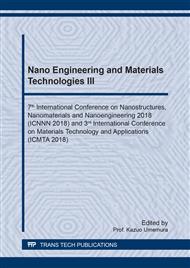p.3
p.13
p.21
p.26
p.35
p.40
p.47
p.52
Preparation, Characterization, and Encapsulation Efficiency Test of Simvastatin Microencapsulation Using Polyblend of Poly(Lactic Acid)and Poly(ɛ-Caprolactone)
Abstract:
Simvastatin is one of the most extensively used drugs to reduce blood cholesterol levels, which practically insoluble in water and not well absorbed from the gastrointestinal tract. In this study, simvastatin was encapsulated using polyblend of PLA and PCL in the composition of 60:40 by solvent evaporation technique (oil-in-water). The optimization of agitation rate, solvent removal time, emulsion time, and emulsifier concentration have been conducted to obtain the maximum efficiency to encapsulate simvastatin in the matrix polymer. The result showed that the optimum conditions to increase the encapsulation efficiency of simvastatin in the microcapsule using polyblend of PLA and PCL were obtained in the agitation rate, solvent removal time, emulsion time, and Tween 80 concentration as an emulsifier at 700 rpm, 1 hour, 1 hour, and 0.5% (v/v), respectively.
Info:
Periodical:
Pages:
21-25
Citation:
Online since:
March 2019
Authors:
Price:
Сopyright:
© 2019 Trans Tech Publications Ltd. All Rights Reserved
Share:
Citation:


